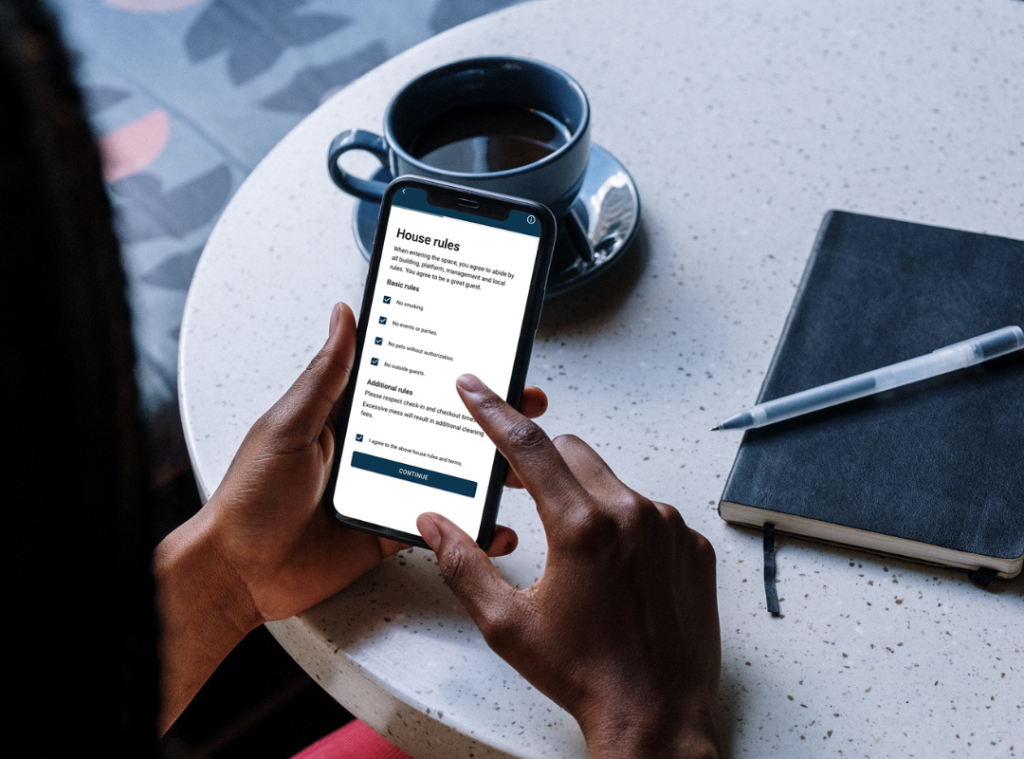The short-term rental market growth has brought new challenges, particularly around safety and security. One crucial aspect that property managers cannot afford to overlook is guest screening. Simply put, guest screening is the process of evaluating potential guests before they arrive. This guide will explain why online guest screening is essential for short-term rentals, how it works, and the benefits it brings to property managers.
What is Online Guest Screening?
Definition and Overview
Online guest screening involves using digital tools and databases to evaluate potential guests. Unlike traditional methods that might rely on gut feeling or minimal checks, online screening provides a more thorough and data-driven approach. It ensures that you have a clear picture of who is staying in your property, helping to mitigate risks and enhance security.
Benefits of Online Guest Screening
Enhanced Security
One of the primary benefits of online guest screening is enhanced security. By thoroughly vetting each guest, you significantly reduce the risk of criminal activity. Knowing that your guests are verified and trustworthy can give you peace of mind. This verification process not only helps in protecting your property but also ensures the safety of other guests and neighbors.
Improved Property Protection
Screening guests also plays a crucial role in property protection. When guests know that they have been vetted, they are more likely to behave responsibly. This reduces the chances of property damage and ensures that your investment remains in good condition. Moreover, it adds a layer of accountability; guests are aware that their actions are recorded and can be traced back to them.
Better Guest Experience
A safer environment created through rigorous guest screening directly translates to a better guest experience. When guests feel safe and know that the host takes security seriously, it builds trust and satisfaction. This can lead to positive reviews and repeat bookings, as guests are more likely to return to a place where they felt secure and valued.
Operational Efficiency
Online guest screening also brings operational efficiency. By automating the screening process, you can streamline the check-in process and reduce the workload for property managers. This means less time spent on manual checks and more time focused on providing excellent service to your guests. Automated screening tools can quickly and accurately assess each guest, making the entire process smoother and more efficient.
How Online Guest Screening Works
Online Guest Screening Apps

In the world of short-term rentals, online guest screening apps have become indispensable tools for property managers. These apps are designed to simplify and streamline the guest vetting process. They offer a range of functionalities, from basic ID verification to comprehensive background checks.
When looking for an online guest screening app, there are a few key features to consider. First, ease of use is crucial. The app should have a straightforward interface that allows you to quickly input guest information and receive results. Second, integration capabilities are important. The best screening apps can easily integrate with your existing property management systems, ensuring a seamless workflow. Third, consider the extent of the checks performed. Some apps offer basic verification, while others provide in-depth screening, including criminal background checks and behavioral analysis.
Popular guest screening tools like Autohost offer a robust set of features tailored specifically for short-term rentals. This can not only help in verifying guest identities but also analyze booking patterns and behaviors to flag potential risks.
Online Guest Screening Management Systems
For property managers handling multiple properties or a large volume of guests, a comprehensive online guest screening management system might be the better choice. These systems provide a more integrated approach, combining guest screening with broader property management functions.
An online guest screening management system integrates various tools and databases, providing a centralized platform for managing guest information. This integration means that once a guest books, their details are automatically entered into the system, which then runs the necessary checks. This automation saves time and reduces the risk of human error.
Moreover, these systems offer real-time updates, ensuring that you always have the most current information at your fingertips. They also provide detailed reports, helping you make informed decisions about each booking. By using a comprehensive management system, you can streamline your operations and maintain a higher level of security and efficiency.
Components and Activities of Online Guest Screening
Screening a guest involves several key activities that ensure a thorough evaluation. The process typically starts with the guest submitting their information through an online form. This information is then used to perform various checks across multiple databases.
The first step is identification verification, where the guest’s ID is checked against official records to confirm their identity. This step helps prevent identity fraud and ensures that the person booking the stay is who they claim to be. Next, a criminal background check is conducted, involving searches of local, national, and sometimes international databases for any criminal history. This step is crucial for identifying potential risks.
Following the criminal background check, a behavioral analysis is performed. This analysis looks at the guest’s online behavior, including reviews from previous stays and their activity on social media. It helps gauge the guest’s reliability and trustworthiness. Lastly, payment verification ensures that the guest’s payment method is legitimate and that there are no issues with the transaction. This step helps to prevent fraud and ensures that you receive your payment without any hitches.
Once all these checks are completed, the results are compiled into a report. This report gives you a clear picture of the guest and helps you decide whether to approve or deny the booking. Understanding these activities and how they fit into the overall screening process is essential for maintaining a safe and efficient rental operation.
Implementing Online Guest Screening
Choosing the Right Online Guest Screening Solution
Selecting the right online guest screening solution is crucial for the success of your short-term rental business. When choosing a tool, it’s important to consider several factors. Firstly, the comprehensiveness of the checks is key. Ensure that the solution covers all necessary aspects, from ID verification to background checks and payment verification. Secondly, look at the ease of integration. The tool should seamlessly integrate with your existing property management system to avoid any disruptions in your workflow. User-friendliness is another important factor. The solution should be easy to use for both you and your staff. Lastly, consider the cost. While it’s important to have a robust screening process, the solution should also be cost-effective and provide good value for money.
Integrating with Existing Systems
Integration is a crucial aspect of implementing an online guest screening solution. Your chosen tool should work well with your current property management system, ensuring a smooth and efficient operation. Proper integration means that once a guest books, their details are automatically fed into the screening system, saving you time and reducing the risk of errors. It also ensures that all data is centralized, making it easier to manage and track. When evaluating solutions, check for compatibility with your existing systems and ask for demonstrations to see how well the integration works.
Training and Adoption
Once you’ve selected and integrated your online guest screening solution, the next step is training your staff. Proper training is essential to ensure that your team knows how to use the new system effectively. Start with a comprehensive training session covering all aspects of the tool, from inputting guest information to interpreting screening results. Encourage your team to ask questions and provide them with resources like user manuals or tutorial videos for ongoing support. Adoption is also key. Highlight the benefits of the new system, such as improved security and efficiency, to get your team on board. Regular follow-up sessions can help address any issues and ensure that the system is being used correctly and to its full potential.

Challenges and Solutions
Privacy Concerns
One of the main challenges with online guest screening is addressing privacy concerns. Guests may worry about how their personal information is being used and stored. To tackle this, be transparent about your screening process. Clearly explain why the screening is necessary and how it helps ensure a safer environment for everyone. Make sure to comply with privacy laws and regulations, such as GDPR or CCPA, to protect guest data. Use secure platforms that prioritize data protection, and assure your guests that their information is handled responsibly and confidentially.
False Positives/Negatives
Another challenge is dealing with false positives or negatives during the screening process. A false positive could mean rejecting a legitimate guest, while a false negative could mean missing a potential risk. To manage this, set up a manual review process for questionable results. This involves taking a closer look at the flagged data and possibly reaching out to the guest for additional information. Having a human element in the review process helps to ensure that genuine guests aren’t unfairly denied and that any risks are appropriately managed.
Technical Issues
Technical issues can arise, especially when integrating new screening tools with existing systems. To prevent these problems, choose a reliable screening tool with strong customer support. Ensure that the tool is compatible with your current property management system and conduct thorough testing before fully implementing it. Regular maintenance and updates are also crucial to keep the system running smoothly. If technical issues do occur, having a dedicated support team available can help resolve them quickly, minimizing disruption to your operations.
Online guest screening is a critical component for ensuring the safety and success of your short-term rental business. It enhances security, protects your property, improves the guest experience, and boosts operational efficiency. By choosing the right screening solution, integrating it seamlessly, and training your staff effectively, you can create a safer and more enjoyable environment for everyone involved.
Ready to take your guest screening to the next level? Explore Autohost’s solutions today and see how we can help you safeguard your rentals. Let’s make your short-term rental business the best it can be!





























